Ideal for surfing, sunsets and seafood, these are the best of Lisbon’s sandy swathes…
Lisbon has made a name for itself as one of the best city breaks in the world. It has everything you could ask for to make the ideal city escape; wonderful weather, fantastic food, a chilled ambience, history and culture. Something that tips the scales for us when compared to other city breaks, however, is Lisbon’s easy access to several brilliant beaches.
Indeed, one of the biggest draws of the Lisbon area is the beach scene. Holidaymakers seeking the cultural satisfaction of a city break and the relaxation of a beach break can find both in the Portuguese capital. When visitors are ready to swap sightseeing for sea, sand and sun, there’s a host of beaches in easy reach via public transport.
Lisbon’s temperate climate means that (with a little bit of luck) you can enjoy the outdoors nearly all year round. The summer months of June, July, and August are nearly always warm and dry. That sunshine and warmth tend to last to mid-late October, meaning you can still enjoy the beaches post-summer.
From watersports to enjoying the Portuguese tradition of eating bola de Berlim (Berlin balls) on the beach, or, you know, just plain ol’ reclining on the sand, there’s something for everyone on Lisbon’s beaches.
With the help of our friends at Visit Lisboa, here are six stretches of sand with unique charms, all of which can be accessed on public transport with ease from the city.
Carcavelos Beach, Carcavelos
Less than 30 minutes by train from Lisbon, Carcavelos Beach is a favourite for both locals and tourists. Given its proximity to Lisbon and ease of access, the beach can get particularly busy in the summer months. In other words, it’s a lively spot for those who like a bit of excitement with their beach day.
Here you’ll find locals playing rounders on the sand, surfers riding the waves, sunbathers sunbathing and families having fun. With more than a mile of golden sands, excellent waves for surfing and bodyboarding, a lively promenade of cafes and restaurants, plus kiosks for hiring beach and water sports equipment, this beach has it all. If you’re one of those people who get bored at the beach, this is the place for you.
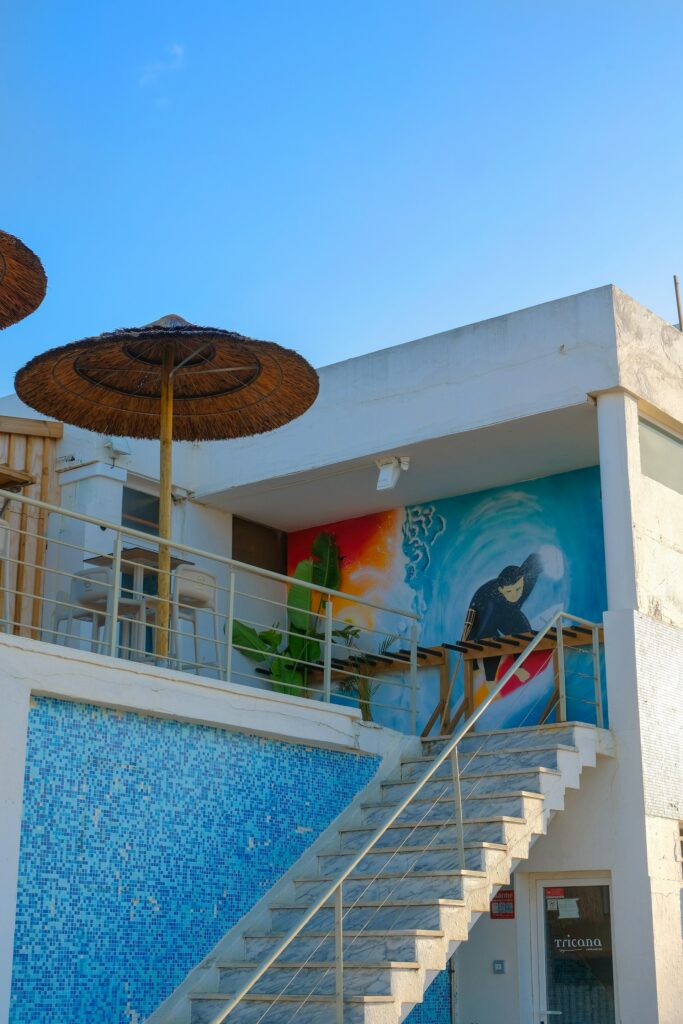
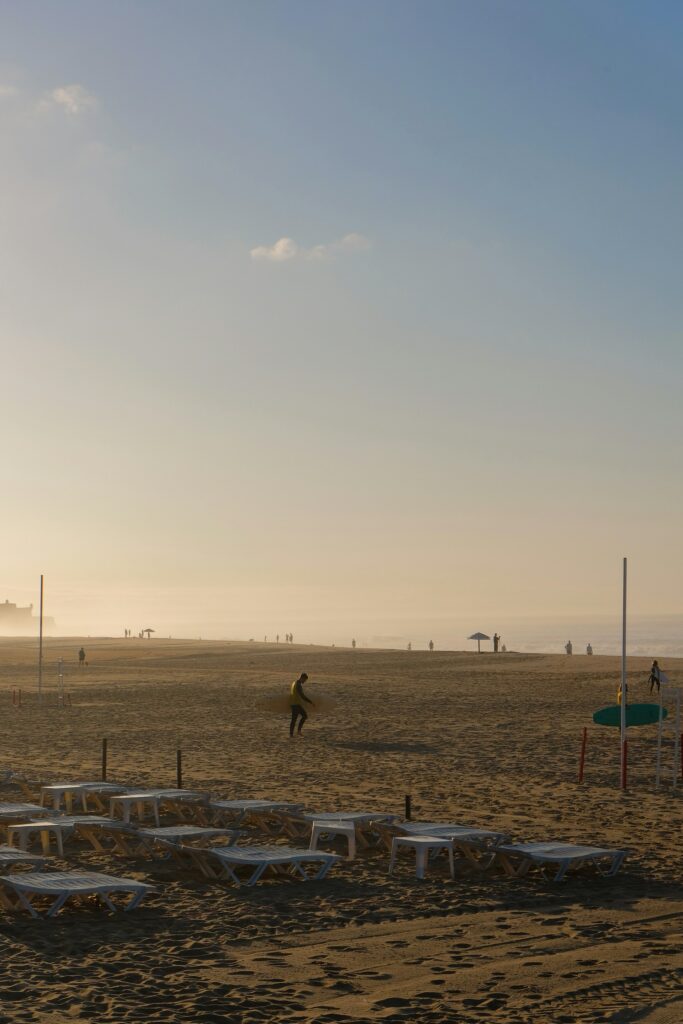
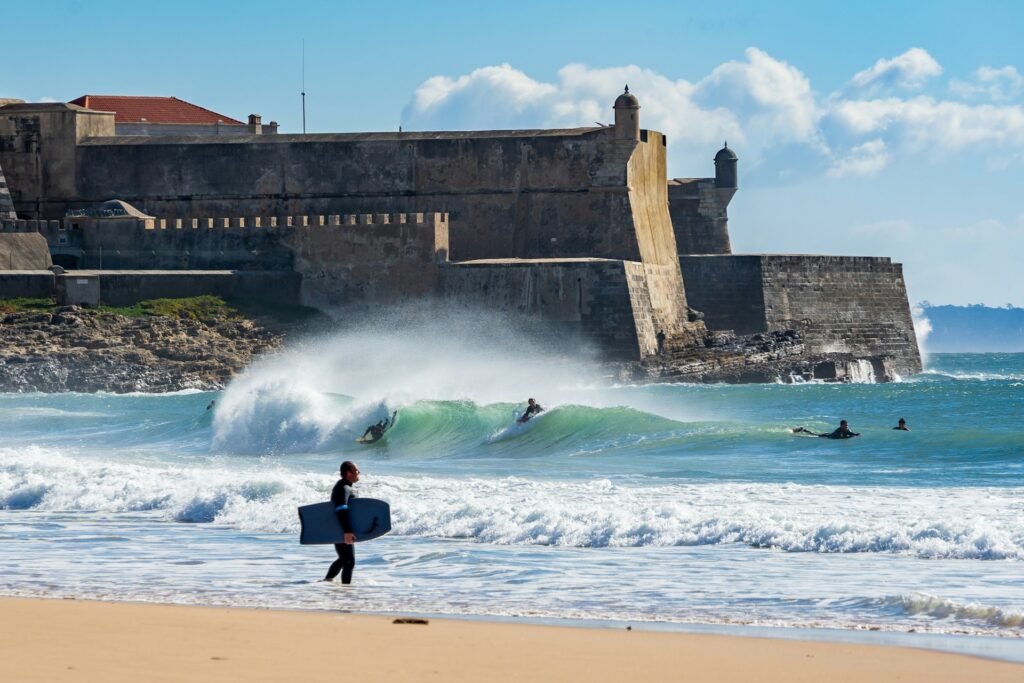
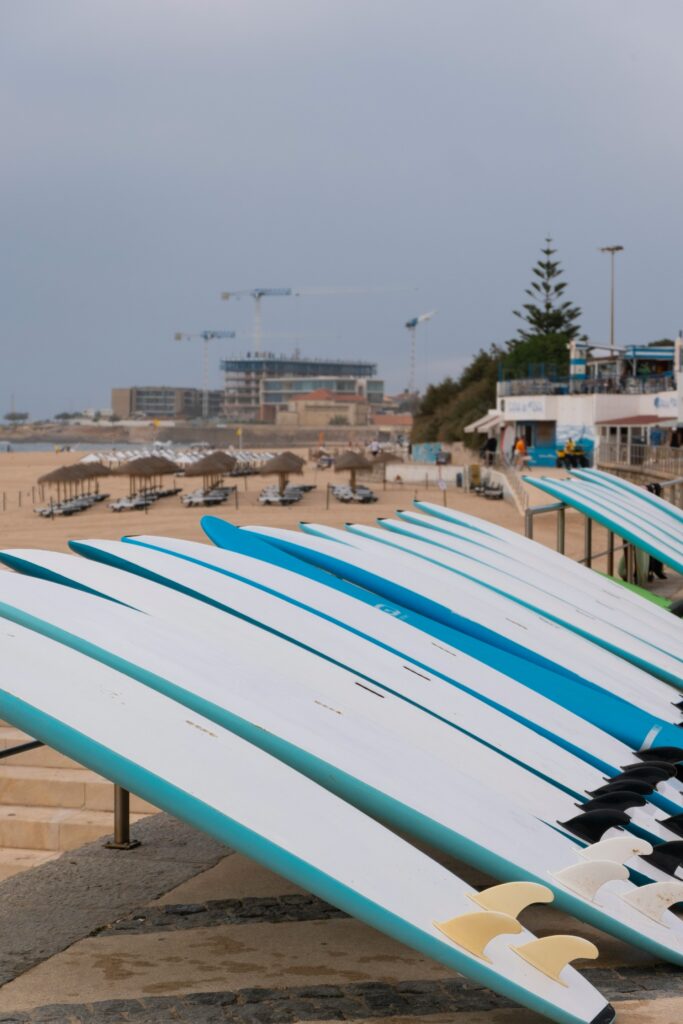
At one end of the beach is the Fort of São Julião da Barra, which once guarded the entrance to the River Tagus from enemy ships, and is still one of Portugal’s largest maritime fortifications.
Getting there: The train from Lisbon’s Cais do Sodré station to Carcavelos takes 26 minutes, with a short walk from the station to the beach.
Praia da Conceição and Praia de Duquesa, Cascais
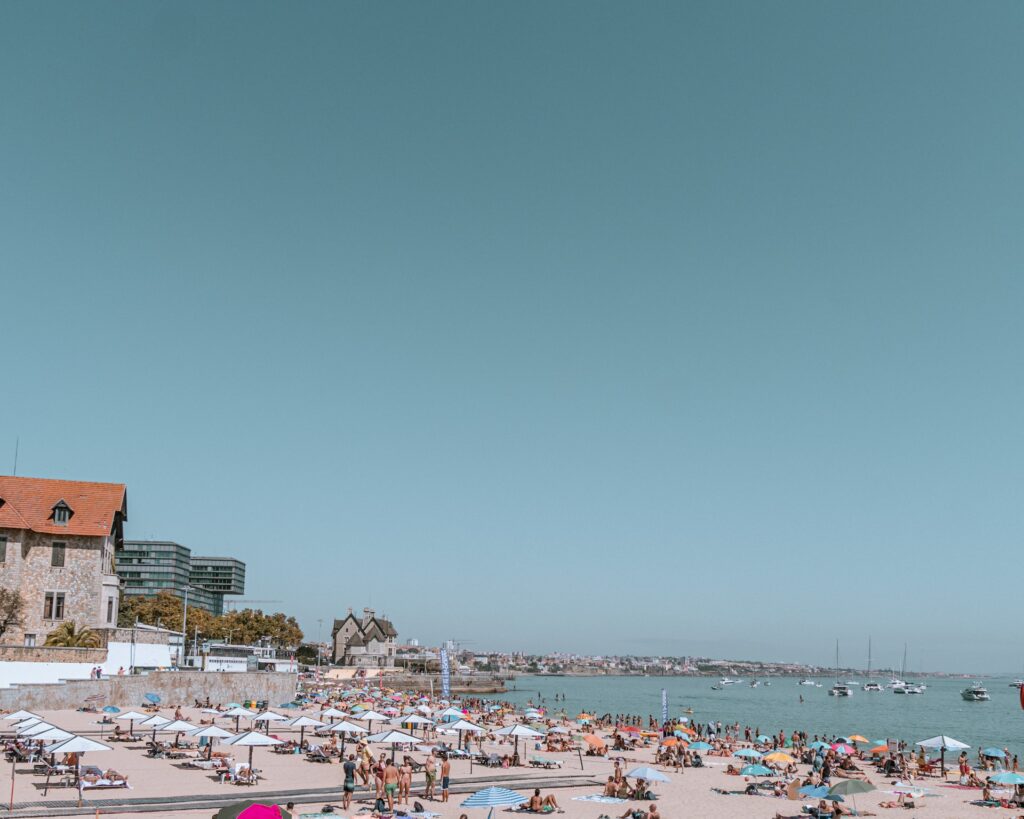
In the heart of Cascais, the beaches of Praia da Conceição and Praia de Duquesa are only separated at high tide, and together they combine convenience with charm.
Easily accessible from Lisbon and sheltered from the Atlantic waves, this stretch offers calm waters and a family-friendly atmosphere, with a large inflatable for kids to swim out to and clamber over during the summer months, plus a range of amenities and dining options nearby, all helping to make this one of the region’s most popular beaches.
Getting there: The Cascais train from Cais do Sodré station takes around 40 minutes, and the beach is less than 5-minutes walk from the final stop.
Praia do Tamariz, Estoril
Praia do Tamariz, located in the picturesque town of Estoril, is a beach steeped in history and intrigue. This stunning coastal spot is home to the Grand Casino, which was built in 1935 and was once the place Lisbon’s rich came to play. It was even a holiday favourite of Portugal’s King Luís. It’s also famously known as the place where Ian Fleming found inspiration for his first James Bond novel, Casino Royale.
After the Second World War, Estoril became a haven for refugees from across Europe. The town’s luxurious Hotel Palácio played host to an eclectic mix of notable figures seeking refuge and solace. Among its distinguished guests were the surrealist artist Salvador Dalí, the celebrated author Antoine de Saint-Exupéry, the aforementioned British intelligence officer and writer Ian Fleming, and the Duke and Duchess of Windsor, Wallis Simpson. The hotel also became a hotbed for espionage, with numerous spies from different nations mingling within its opulent walls, adding to the locale’s enigmatic charm.
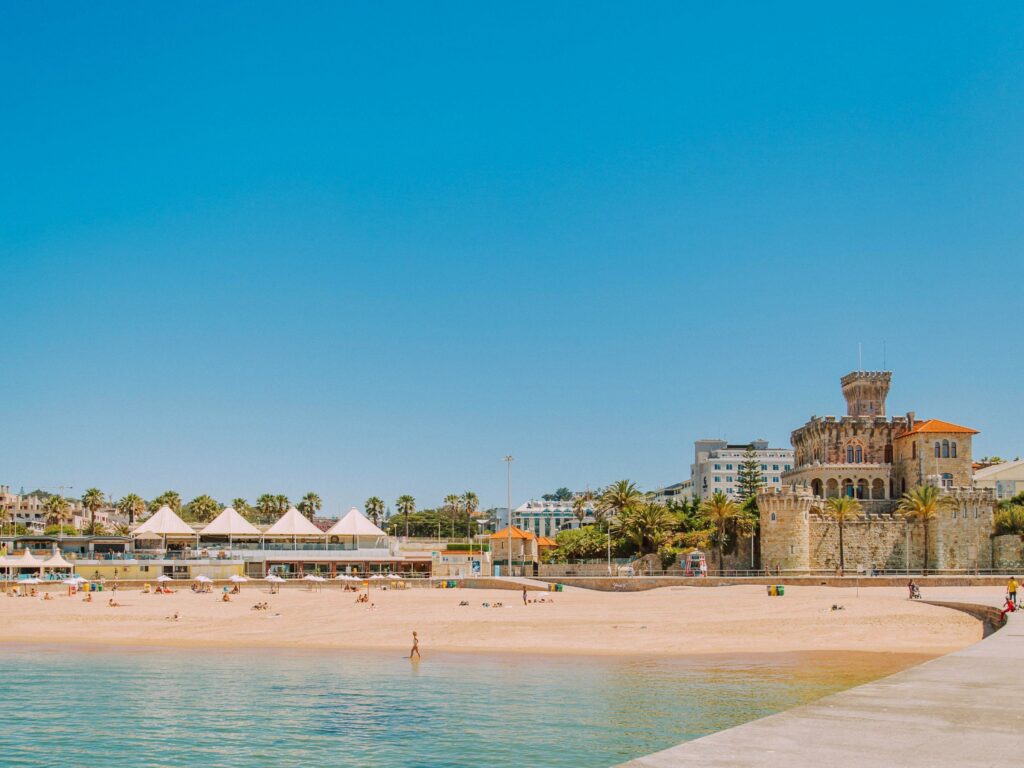
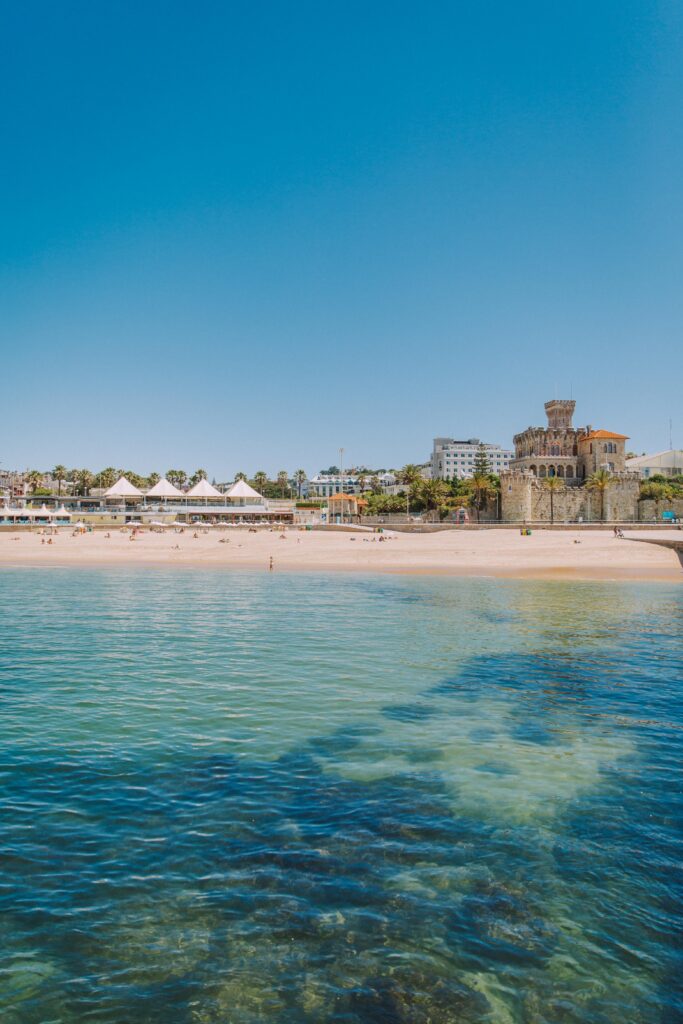
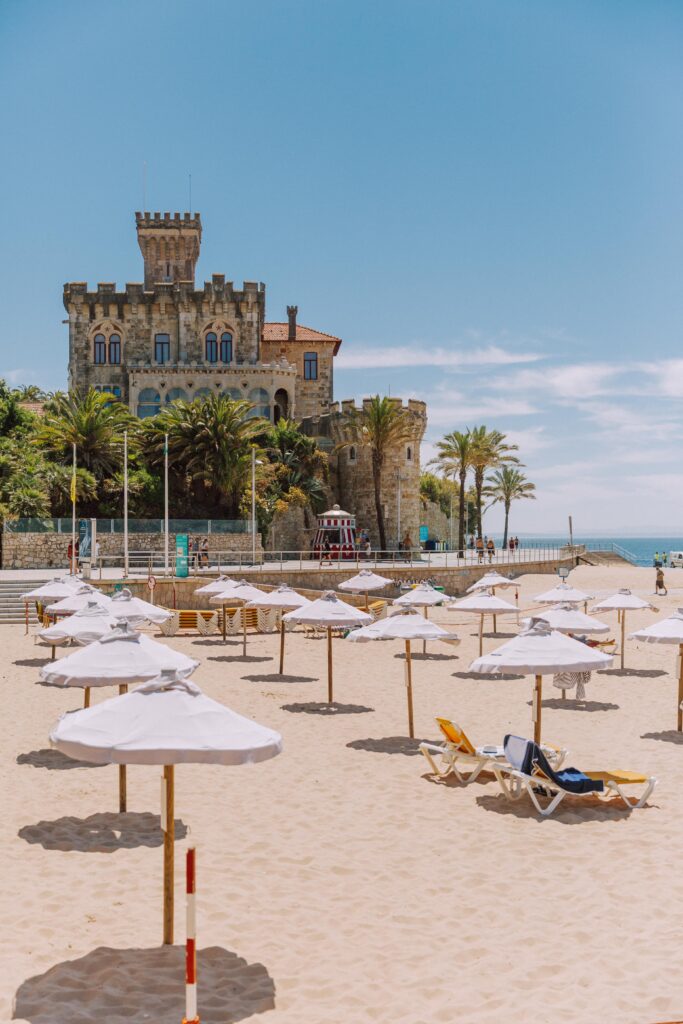
Adding to the historical tapestry of Praia do Tamariz is the 17th-century castle, Forte da Cruz. This striking fortress stands as a testament to the area’s rich past and offers a glimpse into the defensive strategies of the time. It’s now a popular, premium wedding venue. Adjacent to the beach, visitors (and guests) can also find a quaint saltwater pool.
Today, Praia do Tamariz, with its golden sand beach, is ideal for families – calm waters, rock pools, and that salt-water swimming pool providing a warmer option for the kids.
Getting there: The train from Cais Do Sodre in Lisbon to Estoril takes less than 40 minutes, and the beach is a short walk from the station.
Costa da Caparica
Just 10km to the south west of Lisbon, on the south side of the River Tagus, the Costa da Caparica has a 25 km sandy coastline favoured by locals. Here the waves are strong and you can feel the roaring force of the Atlantic. It’s a surfer’s dream. Indeed, the beach has been consistently hailed as one of the Lisbon’s best surf spots.
Given its popularity with Alfacinhas, Costa da Caparica can get particularly busy on the weekends. However, its long sandy stretch of beach means there are plenty of spots to chill out, especially on the beach bars which are ideal for sundowners where lively young crowds are drawn to chill, drink and dance.

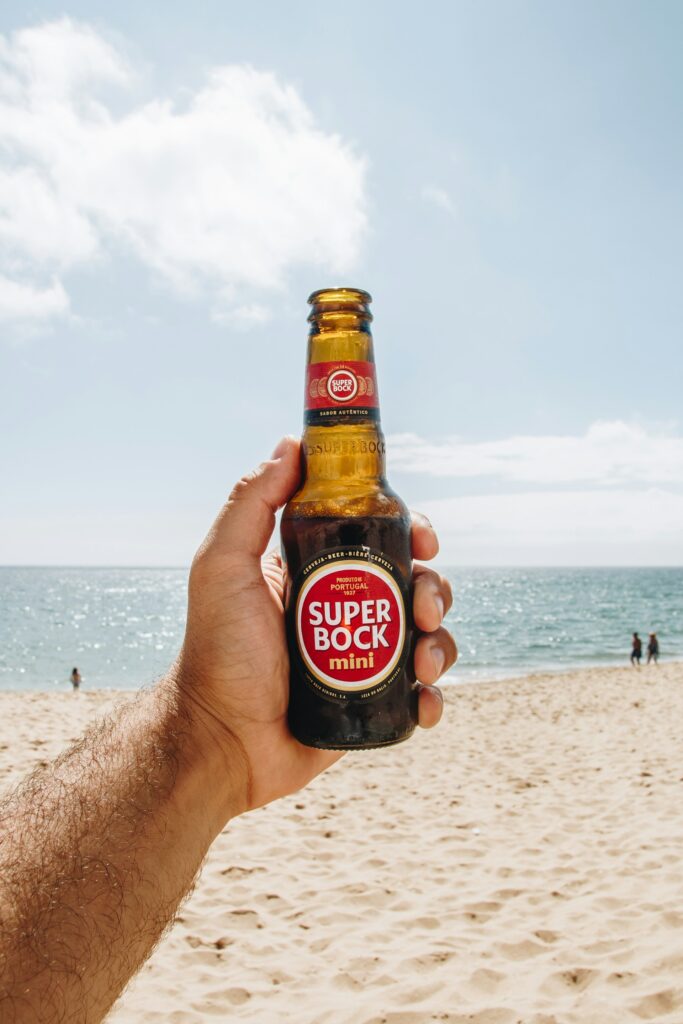
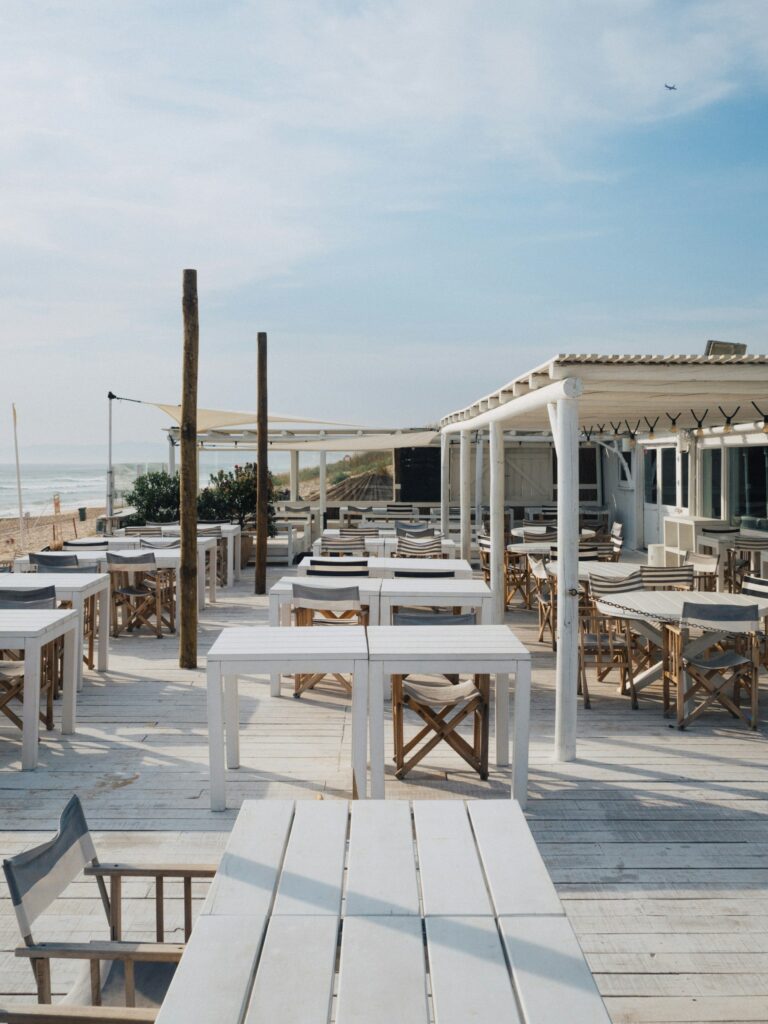
Public transport takes travellers to the town of the same name, where there are sands with calm waters and extensive amenities. There are more remote beaches further down the coast for those looking for a more relaxed atmosphere.
Getting there: Take the 3710 bus from Areeiro in Lisbon to the town of Costa Caparica, for a 55 minute journey to the northernmost beaches. Visitors can also catch the mini-train, Transpraia, which runs from the beginning of June to the end of September, with 21 stops at more southerly sands.
Praia da Figueirinha, Arrábida Natural Park
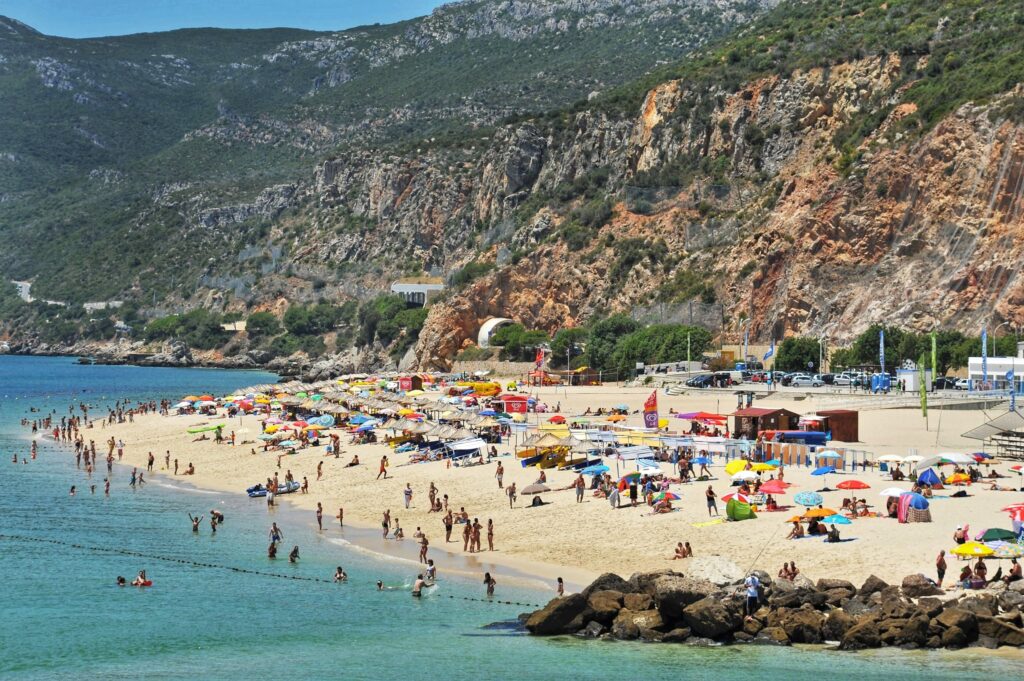
Praia da Figueirinha is the biggest beach in the Arrábida Natural Park, and the only one with direct bus access from nearby Setúbal. This beach is a great choice for families, with shallow waters, a sandbar to swim out to, lifeguards and a dramatic hilly backdrop.
It’s worth noting that this beach isn’t as busy as some and, accordingly, isn’t served by shops or food vendors, so it’s worth coming prepared with a picnic.
Getting there: There are trains and express buses running from Lisbon to Setúbal, with similar travel times and fares. Once at Setúbal, take the 723 bus which runs from mid-June to mid-September, and gets passengers to Praia da Figueirinha in around 25 minutes.
Praia da Ursa, Sintra

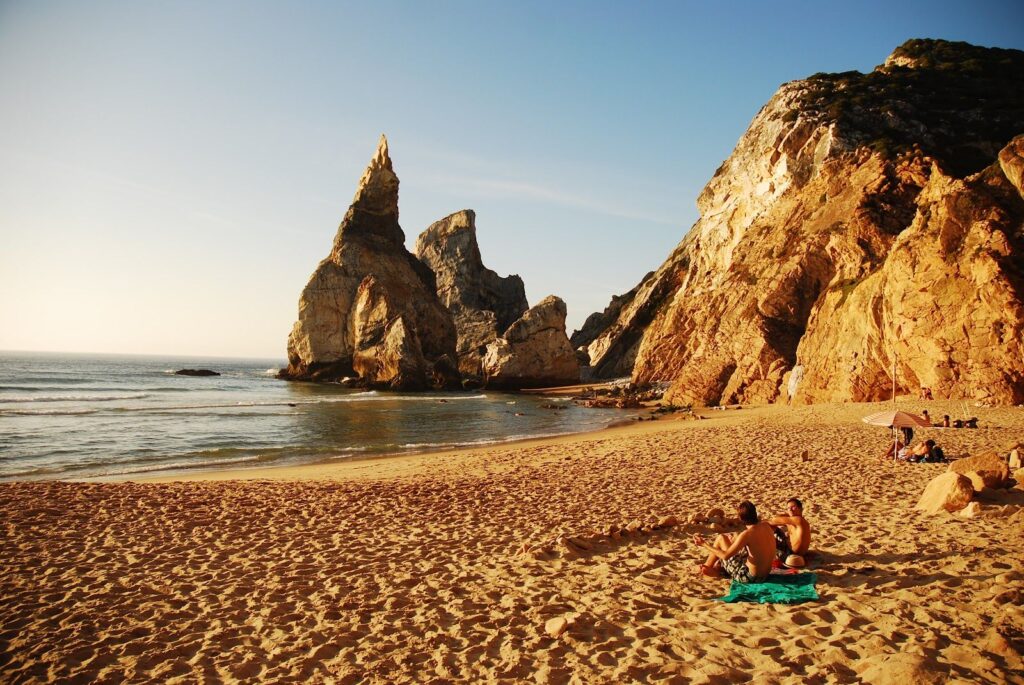
For those seeking solitude, Praia da Ursa is a wild and remote beach next to the Cabo da Roca, the westernmost point in Europe. A sweeping escape into the Atlantic, the beach is only accessible via a hiking trail, and it’s a secluded spot known for its rugged cliffs and unique rock formations, including a bear-shaped sea stack.
Ideal for nature lovers, it provides a peaceful retreat for sunbathing and exploring natural rock pools, though swimming is not recommended due to strong currents. Its seclusion also means that Praia da Ursa is an unofficial naturist beach.
Getting there: Take the train for a 40-minute journey from Lisbon’s Cais do Sodré station to Cascais, and then catch the bus to Cabo da Roca.
About The Lisboa Card
The Lisboa Card enables travel by bus, metro, tram, and funicular, plus CP train lines to Sintra and Cascais, and entrance to 51 museums, monuments and UNESCO World Heritage sites, and discounts on tours, shopping, and nightlife, all for a one-off fee. There are 24 hr (€27), 48 hr (€44) and 72 hr (€54) options available.
For more information, ideas, and inspiration on visiting Lisbon, please go to www.visitlisboa.com.





